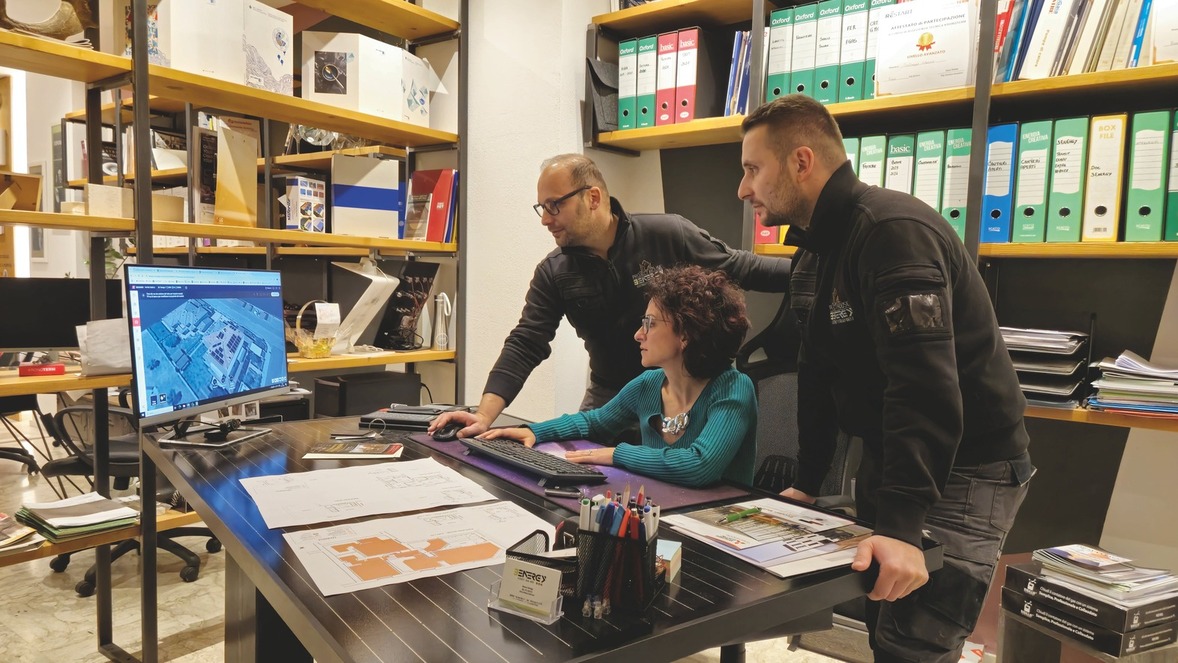By Simone Bandini
You have certainly heard of ecological transition, of that abstract concept that we could define as “that process of technological innovation and environmental revolution aimed at promoting the economy and development while respecting the environment and its sustainability” that the European Union has translated into a regulatory sense with a series of political guidelines, laws and devices – with economic repercussions, social and cultural of great importance. A topic that often divides opposing factions, as if we were at the stadium. But to evaluate its essence, let’s get down to the concrete, talking about the professional Alessio Selvaggi, the company ‘3Energy’ and the architect Michela Rosi, of the ProjectHouse studio – united in life and work for the promotion and development of this ideal – of which they are ‘living’ examples.
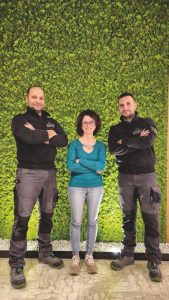 To understand his passion for ecology, it is necessary to evoke his childhood and the legendary teacher Ivana of the elementary school of Selci: “She is the one who passed on to me the love for science, nature and the countryside where I grew up”, Alessio tells us.
To understand his passion for ecology, it is necessary to evoke his childhood and the legendary teacher Ivana of the elementary school of Selci: “She is the one who passed on to me the love for science, nature and the countryside where I grew up”, Alessio tells us.
Growing up and wanting to realize himself, he understood its ethical value, and also its economic potential: “I did nothing but transfer this way of being to the professional field”.
The first step? The renovation of our home, in 2015: “We understood how to imagine the future, while also being able to save money, focusing decisively on the energy efficiency of our home”, Michela now intervenes.
“So, I remember having installed, in the area, the first dry radiant system integrated with wood fiber insulation, which we also proposed on the roof, only with a different density and, the final touch, a wooden parquet on the ground,” Alessio points out.
The essence of this intervention – as of the others to come – was to be able to heat and cool the rooms through an efficient heat pump and power the system with photovoltaic energy. A decisive step towards energy independence and ecology: “A goal that, to date, has been achieved”.
Three years ago, with the evolution of specific technologies of electric mobility, they also updated their private and professional fleet, making it almost completely electric: “In the evening, when we return to the family, we recharge our batteries and, the next day, we are ready to leave!”
In short, an integral and coherent ‘ecological’ lifestyle – which is not limited to the commercial fact but goes beyond, being first and foremost an ethical condition. Alessio and Michela embody the enthusiasm and spontaneity of this new perspective.
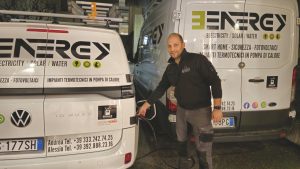
I won’t hide from you that I too, several times, have been fascinated by the idea of designing a totally off-grid house, i.e. totally independent from an energy point of view. But is mine an achievable dream?
“To date it can be done – and the solutions are many. There is certainly a substantial initial investment to be made which, however, over time revalues the value of the property; But the advantages, even immediate ones, of management are priceless: from energy to concretely economic savings and up to the tangible increase in living comfort. Finally, the circle closes with the necessary integration between electric cars and photovoltaic systems, as we said, which significantly reduces the cost per km of the vehicle”.
Going on with our conversation, we understand how the structure of property is fundamental, whether it is a farmhouse in the countryside or an apartment in the city. The former has a dispersion of thermal energy that is usually much greater, for example, if only because it is isolated. What to do then?
“The first thing is to eliminate LPG, which has very high costs and a lower thermal conversion index than other systems: an ideal solution is the installation of a heat pump.” Ethical, sustainable, its generator can both heat and cool with a very high ‘Operating Production Coefficient’ (an energy ratio of about 1 to 4, which consumes 1 kw/h electricity by giving up 4 thermal kw).
Another advancement is certainly, when possible, the preparation of a thermal coat in fiberglass, wood, rock wool: “In fact, I only offer ecological and high-performance solutions; I don’t even consider the others,” adds Michela. Finally, the replacement of windows with more efficient models and materials will have to be evaluated since windows are, in fact, “the weakest part of the house for heat dispersion”.
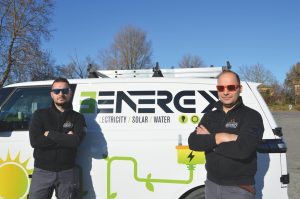
“The myth – e continues Alessio – that the heat pump cannot work with radiators must also be debunked. In fact, there are versions designed for critical climatic conditions, thinking, instead, of radiant floor solutions in less difficult environmental situations. If we take, for example, a farmhouse with old radiators, a heat pump designed for high-temperature operation will be needed: “It all depends on a careful preliminary energy assessment drawn up on the building in question and its particular structures,” Michela tells us.
Another advantage of the heat pump is that, in addition, compared to heating with wood, pellets or wood chips, it does not require large spaces and storage work – and can do without major periodic maintenance and is not subject to recurring failures.
A technology that, explained in a nutshell, is that of the ‘refrigeration circuit’ that compresses the refrigerant gas; by compressing the gas heats up and gives the heat itself to the technical water of the system (whether it is fan coils or radiators). Downstream, the heat is distributed on radiant floor systems or, even better, on ceiling radiant systems: “Which are the best, instantaneous, most homogeneous in heat distribution and absolutely phenomenal in cooling,” continues Alessio.
It should also not be forgotten that in a well-efficient and insulated home, air recirculation is very important for a high standard of living and hygiene: “This is why CMV (Controlled Mechanical Ventilation) intervenes, centralized, perhaps managed with home automation and building automation systems”.
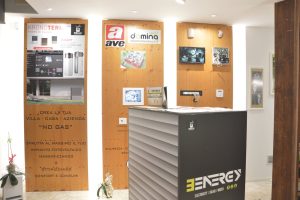
Andrea, Alessio’s brother, is also an integral part of the 3Energy operational team: “We are interchangeable, this is our strength. However, my skills relate more closely to the hydraulic part, while Andrea usually follows the electrical part”.
Waiting for the future, which is actually already among us with the development of artificial intelligence applied to these new technologies, Alessio and Michela tell us how, escaping from everyday life, they assiduously frequent the mountains, loving contact with nature and going out into the woods.
The place of the heart? Trentino-Alto Adige, for its conservative and at the same time evolutionary mentality, in addition to its superb valleys and Alpine peaks.
Info: ProjectHouse – 3Energy, Viale Nardi 18/A, Selci – San Giustino (Pg)
A new office is about to open in Pieve Santo Stefano (Ar), in Via Sulpizia 17.
Tel. 333 5743924 (Michela) / 392 8882316 (Alessio)
Mail: info@projecthouse.biz / info@3-energy.it
www.projecthouse.biz / www.3-energy.it
